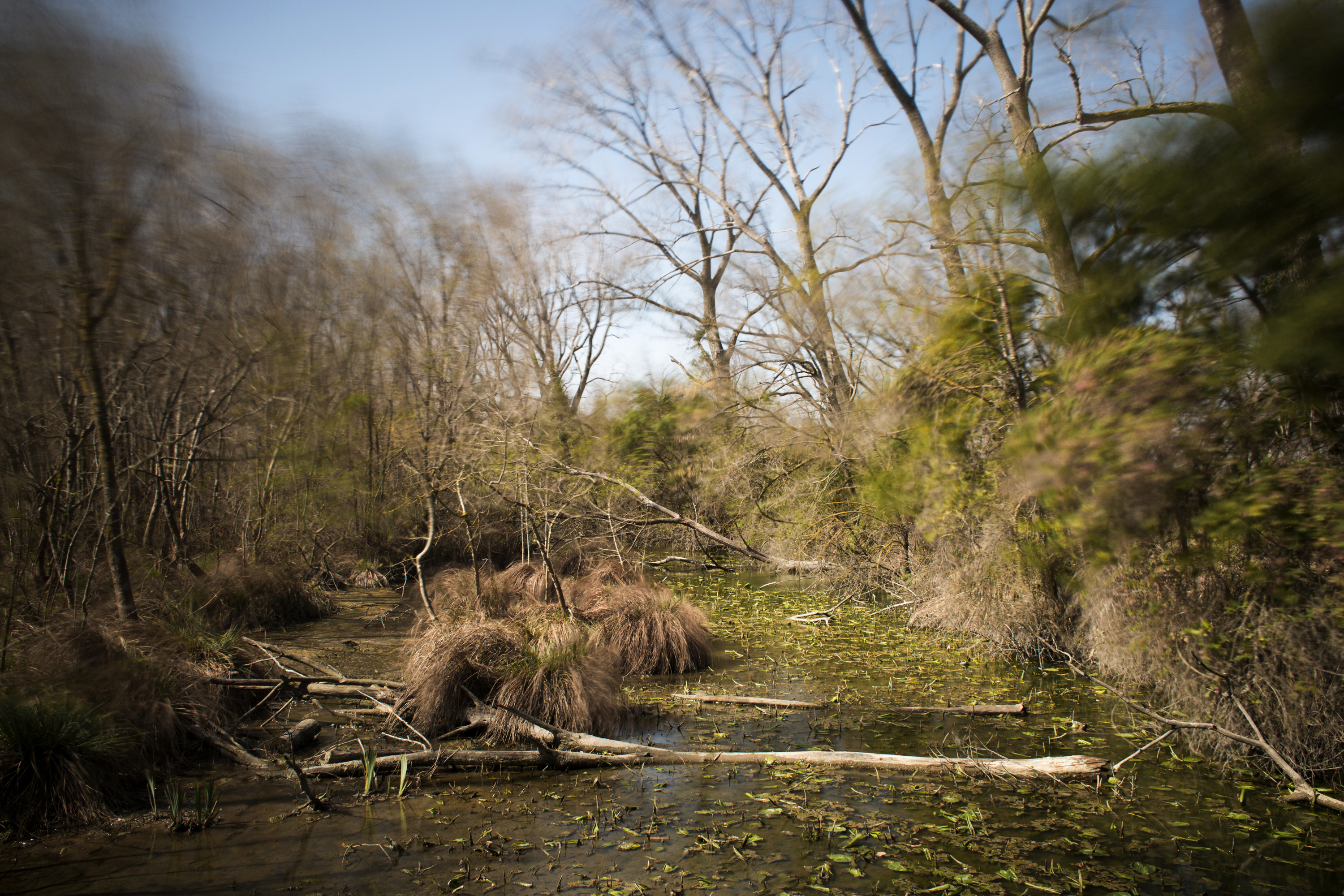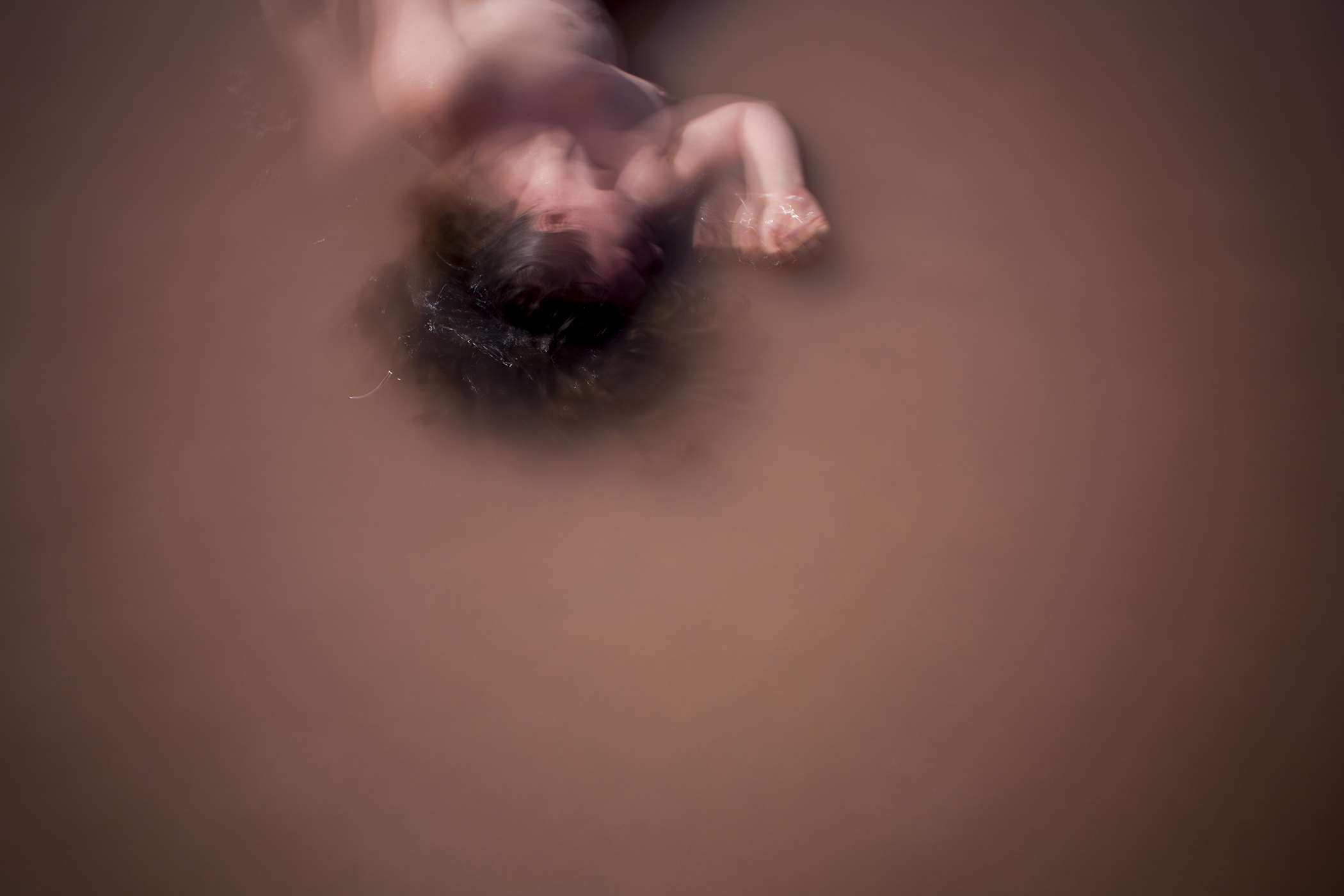Fernanda Kock (b. Brazil, 1981) is a fine art photographer living in New York City who works in self-portraiture. Her photographic process is a blend between structured projects and photographs she takes spontaneously, experiencing life. She styles landscapes with a veil of secrecy and sometimes darkness, creating other-wordly depictions of herself, manipulated by a combination of method and accidents. Prior to her MFA at Parsons, she completed her formal education in photography at Universidade do Vale do Itajaí, in 2008. Fernanda’s previous exhibits and installations include: Museum of Arts of Santa Catarina (MASC, in Florianópolis, Brazil) group show Brazilian Contemporary Photography where she exhibited the series Chrysalis, a representation of a symbolic rebirth; Soho20 Gallery, New York; Pingyao International Photography Festival, China; and Tyler School of Art, in Philadelphia.
—
What are the themes or motivating ideas behind your thesis work?
FK: My work functions as a way to explore emotions, understand the world and translate my experiences, both profound ones or “en passant”, as I experience life. I work with different ideas on the perception of time, movement, intangible emotions, notions of identity and belonging, always looking for discoveries on a personal level.
The outputs of my explorations vary. Since the initiation of the MFA program, I’ve experimented with the media and apparatus, in a variety of different working methods to convey my work. Now it is more open, I allow a freedom of movement between techniques and I don’t aim my work to be constrained to a certain type of aesthetic. The unexpected is welcome and the discoveries on the way can reroute my projects.
In my thesis work, I brought together long-exposed photographs of water, a catalogue of surfaces metaphorically related to a transitional state of being. A video projection overlays the photographs, subtly transitioning from orange to blue, complementary colors extracted from two photographs of bed sheet folds I took three years apart, Dec 31st 2012 and 2015, representing distinct moments of my own journey from past to present.
The subject matter was in a continuous transformation until it became something else, I shifted the way the surface is perceived. Photography was functioning not only as a way to translate my experiences but also as a way to transform them.

What has been the process behind developing your concept? How does scenery play into your work?
FK: I normally choose isolated places where I don’t need to rush and can spend some time working. Although I do take into consideration the context of where I’m living at the moment, as I did in previous series (Chrysalis and Canvas), the subject matter of what I’m showing in the thesis show is completely removed from its context so the scenery didn’t really matter. In the rest of the photos of the project, though, I immersed myself within landscape – I used myself, as I find it more comfortable to control or make myself vulnerable than make others. I take the time I need to photograph and don’t worry whether the photograph will work in the series or not, I exhaust ideas in the moment I’m conceiving the photograph.
In my process, the combination of method and research with instinct and accidents feeds one another continuously. I begin a project with a simple idea and I build the steps along the way because the work organically tells me where to go next. It always does.
By Terricka Johnson
—


